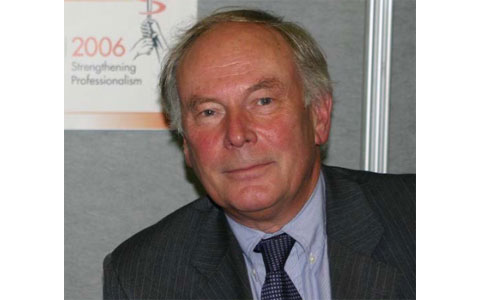
La Dra. Julia Camps entrevista al Dr. Per Skaan
Do you consider that tomosynthesis is finally ready for implementation in large-scale population screening programmes?
- Increased costs related to radiologists interpretation time. I do not think that “slabs” instead of slices (or CAD) for the time being could reduce the reading time very much. So we end up with about a doubling of the reading time (in batch mode) for radiologists.
- A couple of studies have indicated that DBT would be cost-effective due to reduced recall rates (which are really expensive in large-scale screening programmes) and perhaps lower costs due to detection of smalerl cancers. Further studies on this topic is needed.
- The examination time must be acceptable and not much longer than for conventional FFDM (2D). Some equipment today would not be suitable for a large-scale program.
- The significant reduced recalls rates as shown in the retrospective US studies (comparing FFDM and tomo) and the significant increased detection rate of invasive cancers as shown in the prospective European studies clearly demonstrates that DBT is superior to the current used mammographic techniques. It is hard to accept that “old” techniques like SFM and CR which have lower accuracy even than FFDM is allowed in most screening programs but DBT is not!
- PACS storage and retrieval need to be well planned and organized.
- Tomosynthesis has the same challenge with interobserver variability and learning curve as conventional mammography. Training is essential.
- Regarding radiation dose: I think that tomo with synthetic 2D is going to be the standard in the future screening. Using DBT with synthetic 2D the radiation dose is comparable to conventional FFDM, and the harm for women age 50-69 being screened biannually is really minimal.
- The manufacturer of DBT equipments have chosen different solutions regarding scan angle, resolution, projections, scan time, tube motion, and reconstruction algorithms. Nobody knows today which solution is optimal or the best one. Hopefully we will not have a never-ending experimental “game” testing all the possible combinations with each other! An equipment must of course be tested for performance, but we must avoid too time-consuming physical experiments. We have accepted different design for CT, MRI and other modalities for clinical use!.
In your opinion, Is overdiagnosis a drawback strong enough to prevent women from attending BC screening programmes?
- As long as the pathologist classifies a lesion as “cancer” and the surgeon/oncologist says that this lesion (“cancer”) needs to be treated, we should be careful saying that the radiologist has made an “overdiagnosis”. We can only make a correct or incorrect diagnosis.
- In my view is the problem “overtreatment”; do really the small grade 1 invasive cancers or low-grade DCIS need more than surgical resection and careful clinical and mammographic follow-up!?
- When information is given to the women, one should talk about very little aggressive cancers or more aggressive cancers, the women cannot put the term “overdiagnosis” into a meaningful understanding.
| Dra. Julia Camps Hospital de la Ribera Presidenta del Comité Científico 2º Congreso Español de la Mama |
Dr. Per Skaan Since 1982 working in Diagnostic Radiology, Ullevaal University Hospital, Oslo, Norway. From 1996 leader of the Mammography Screening Program in Oslo, Norway. From 2001 Professor at the Department of Radiology, Ullevaal University Hospital, Oslo |
